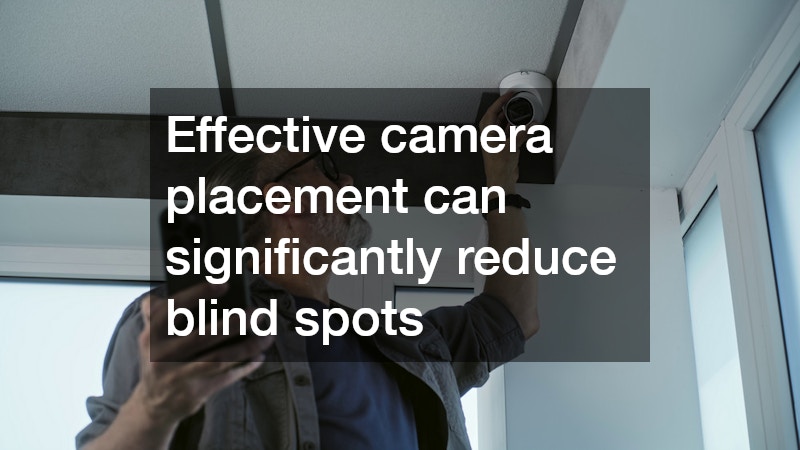How to Effectively Integrate a Commercial Security Camera System
In this article, we will discuss the best practices for integrating a commercial security camera system to enhance safety and security in business environments. As security threats evolve and businesses face increasing risks, having a reliable surveillance system is more important than ever. A well-planned camera system can deter criminal activity, provide valuable evidence in case of incidents, and contribute to overall workplace safety.
Whether you’re upgrading an existing setup or installing a new system, understanding key considerations will help you make informed decisions to protect your assets effectively.
What Are the Key Considerations When Choosing a Commercial Security Camera System?
When selecting a commercial security camera system, it is essential to assess various types of cameras available in the market, including dome, bullet, and PTZ (pan-tilt-zoom) cameras. Each type has its unique advantages and is suited to different environments based on specific security needs. Make sure to evaluate the resolution capabilities of the cameras as higher resolutions generally provide clearer footage, which is crucial for effective monitoring and evidence collection.
Additionally, consider the features that come with the cameras, such as night vision, motion detection, and smart analytics. Night vision capabilities are particularly important for businesses that require 24/7 surveillance, while motion detection can help reduce the amount of footage needing to be reviewed. Moreover, smart analytics may offer the advantage of automated alerts and behavior recognition, enhancing the overall security operations.
Finally, technology options like wireless vs. wired installations should also be taken into account. Wireless cameras can be easier to install and relocate; however, they may be susceptible to interference and require a strong Wi-Fi signal. On the other hand, wired systems often provide a more stable connection and reliable performance, which can be critical in high-security environments. Assessing your specific operational needs will help you choose the most appropriate security camera system.
How Can You Ensure Proper Installation of Your Security Cameras?
Proper installation is crucial for maximizing the effectiveness of your commercial security camera system. The first step involves strategic planning for camera placement to ensure comprehensive coverage of the premises. Identify key areas that need surveillance, including entrances, exits, parking lots, and other vulnerable spots that may be susceptible to trespassing or theft. Effective camera placement can significantly reduce blind spots and enhance overall security.
Another important aspect of installation is ensuring that all hardware components, such as mounting brackets and wiring, are properly secured and protected from weather elements where applicable. Cameras should be mounted at an appropriate height to deter vandalism while still capturing clear footage. For outdoor setups, the use of weather-resistant cameras is crucial to ensure durability against the elements, such as rain and extreme temperatures.
Hiring professionals for the installation process can also be beneficial. Experienced installers have the necessary knowledge to set up the system correctly, configure settings for optimal performance, and provide valuable insights on system capabilities. This expertise can minimize installation errors and guarantee that all components work in harmony, ultimately enhancing the security of the business environment.
What Are the Best Practices for Maintaining Your Security Camera System?
Regular maintenance of your commercial security camera system is vital to ensure consistent performance and quality of video footage. One key practice is to routinely check the alignment of the cameras. Dust, weather, or other environmental factors can shift the cameras’ positioning, leading to suboptimal coverage. Regularly inspecting and realigning cameras ensures that they capture the intended views, enabling effective security monitoring.
Additionally, it is important to perform software updates on your camera system. Manufacturers often release firmware updates that can fix vulnerabilities, add features, or improve performance. Keeping your security camera system updated helps protect against security threats and enhances method effectiveness. Scheduling routine software checks ensures that your system is running with the latest improvements available.
Lastly, consider a preventive maintenance schedule that includes cleaning camera lenses, checking for signs of wear, and ensuring all connections are secure. Dust and debris can hinder camera visibility, leading to poor-quality footage. Maintaining a clean and operational environment for your cameras can help in providing clear visuals and prompt detection of any incidents as they occur.
Integrating a commercial security camera system requires careful consideration, proper installation, and ongoing maintenance to ensure safety and security in your business. By taking the time to understand the options available, ensuring that cameras are correctly placed and installed, and committing to consistent maintenance practices, businesses can enhance their security measures effectively. A well-integrated security camera system not only safeguards assets but also brings peace of mind to employees and stakeholders alike.

